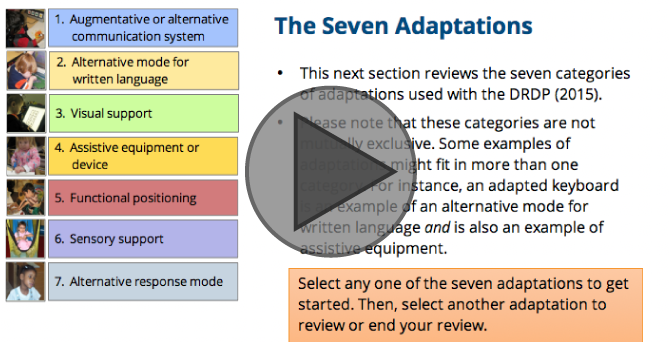News and Updates
Essential Steps in Using the DRDP for Special Education
The results of the DRDP assessment help us better understand children’s learning and development, plan instruction, and share information with families. In order to produce confident results, the DRDP must be used with a number of essential steps in place.
New videos: Using Authentic Assessment for Informing and Differentiating Instruction
The ECTA Center Preschool During the Pandemic series illustrates how the fields of early education and early childhood special education have been successfully supporting preschoolers and their families during the COVID-19 pandemic. Episode 13, a new, two-part video was just added to the series.
Episode 13 - Authentic Learning in Remote Preschool
Part 1: Home Learning Materials and Authentic Assessment
Part 2: Informing and Differentiating Instruction
DHH Mini-Guide: Using the DRDP (2015) with Children Who Are Deaf or Hard of Hearing
The Mini-Guide is a companion to the Using the DRDP (2015) with Children Who Are Deaf or Hard of Hearing guidance. Teachers of the deaf and hard to hearing can share this information by topic with their partners as they collaborate to complete the DRDP. Instructions for a daily listening check for hearing aids are now also included.

